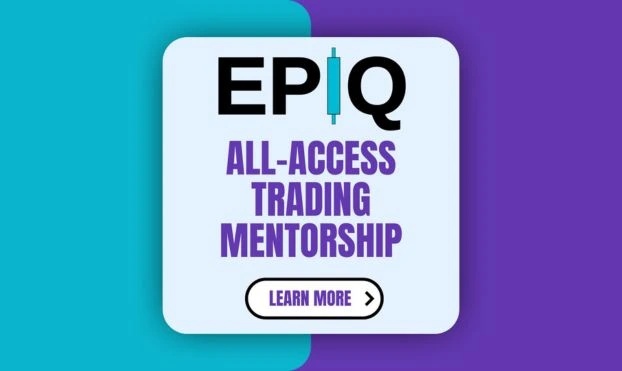If you’ve been diving into futures trading, you’ve probably asked the question:
“Should I trade NQ (Nasdaq) or ES (S&P 500)?”
Both markets offer incredible opportunity, tight spreads, high liquidity, and round-the-clock action. But they behave differently, and your personality, strategy, and risk tolerance could make one a much better fit than the other.
In this blog post, we’ll break down:
- What NQ and ES are
- Key differences in movement and volatility
- The pros and cons of trading each
- Which type of trader each contract fits best
- Real examples of price behavior
- And how to train smarter with EPIQ’s trading tools
Let’s break it down like a pro. 👇
🧠 What Are NQ and ES?
- NQ is the futures ticker for the Nasdaq-100 Index, representing 100 of the largest non-financial tech-heavy companies in the U.S.
- ES is the futures ticker for the S&P 500 Index, representing 500 of the largest companies across all major sectors.
Both are traded on the CME (Chicago Mercantile Exchange), offer high leverage, and run 23 hours a day, 5 days a week.
⚔️ NQ vs ES: What’s the Difference?
| Category | NQ (Nasdaq-100) | ES (S&P 500) |
|---|---|---|
| Volatility | High – very fast, sharp moves | Moderate – smoother trends |
| Tick Value | $20 per tick (0.25 point) | $12.50 per tick (0.25 point) |
| Market Focus | Tech-centric (AAPL, MSFT, NVDA) | Broad sector exposure |
| Behavior | Moves quicker, can whipsaw | More stable, predictable |
| Liquidity | Slightly lower than ES | Extremely high liquidity |
| Ideal For | Momentum and scalping traders | Swing and trend traders |
| Risk Profile | Higher risk, higher reward | More balanced risk profile |
✅ Pros & Cons of Trading NQ
✅ Pros:
- Explosive moves offer massive reward potential
- Great for short-term scalping strategies
- Often leads the market during tech-driven rallies
- High volatility = more trade setups
❌ Cons:
- Can stop you out fast if your entry or risk is off
- Requires precise timing and strict discipline
- Prone to sharp reversals and overreactions
- May be psychologically draining due to speed
✅ Pros & Cons of Trading ES
✅ Pros:
- Smoother and more stable price action
- Easier to read structure and volume levels
- Great for learning futures without excessive risk
- Reacts well to macro news and economic events
❌ Cons:
- Can feel “slower” for aggressive traders
- Smaller profit potential on small moves
- Less reactive than NQ during major tech headlines
🧠 Which One Should You Trade?
It depends on your style and risk appetite:
- If you thrive on speed, volatility, and fast scalps → NQ is your playground
- If you prefer steady trends, structure, and a slower pace → ES is your zone
Still unsure? Start with ES to build confidence and discipline, then scale into NQ once you’ve mastered tight risk and sniper entries.
🎯 How EPIQ Trading Floor Helps You Master Futures Trading
At EPIQ, we don’t just talk about futures, we trade them live. Whether you’re on ES, NQ, or just getting started, our community and tools give you the edge:
✅ Volume-based setups to catch major moves
✅ Futures-focused TA breakdowns and charts
✅ Daily trade ideas and macro commentary
✅ Beginner education to advanced scalping setups
✅ Real traders. Real results. Real mentorship.
Ready to level up?
👉 Join the EPIQ Trading Floor today!
Whether you’re charting the Nasdaq or scalping the S&P, we’ll help you trade like a pro.










Responses